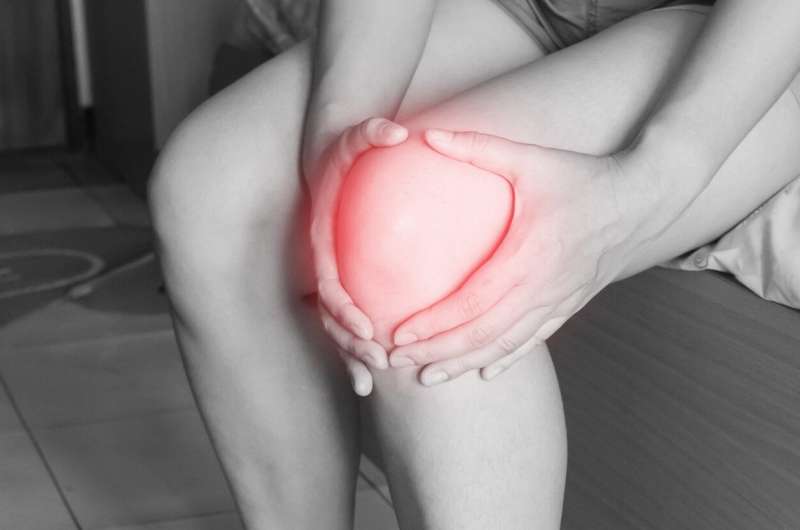This article has been reviewed according to Science X's editorial process and policies. Editors have highlighted the following attributes while ensuring the content's credibility:
fact-checked
peer-reviewed publication
trusted source
proofread
Review calls for clinicians to adopt best-practice guidelines for knee pain

With knee pain affecting a large share of the community, a researcher at La Trobe University is calling for clinicians and GPs to avoid delays in adopting the most up to date, evidenced-based guidelines.
Investigators from the La Trobe Sport and Exercise Medicine Research Center, together with researchers from the Kolling's Osteoarthritis Research Team, report that knee pain is particularly disabling, accounting for 5% of all visits to a GP, in a review paper published in JAMA.
The most common causes of pain are knee osteoarthritis, patellofemoral pain and meniscal tears.
Knee osteoarthritis affects an estimated 654 million people worldwide, while meniscal tears affect approximately 12% of the adult population. Meniscal tears can occur following a twisting injury or as a result of a degenerative condition.
In young people, knee pain is often the result of an acute traumatic injury, such as an ACL injury, meniscal tear or patellofemoral pain, and these conditions typically affect sporting populations under 40.
Following extensive investigations, researchers have found the majority of people with these conditions receive low-value and inappropriate care.
Dr. Adam Culvenor, senior research fellow in the La Trobe Sport and Exercise Medicine Research Center, said the latest research indicates the first-line treatment for these conditions should focus on conservative management, including exercise, education and self-management.
"Our research demonstrates the importance of initially visiting a GP or physiotherapist to aid diagnosis and management," Dr. Culvenor said.
"Imaging is not required to diagnose these conditions, and importantly, surgery is not indicated for most people.
"Surgery is only recommended in specific circumstances, for instance where patients have end-stage osteoarthritis with disabling pain.
"We hope that our work will help inform the clinical community about the optimal, evidence-based care and that those recommendations are adopted as quickly as possible throughout hospitals and the broader community."
More information: Vicky Duong et al, Evaluation and Treatment of Knee Pain, JAMA (2023). DOI: 10.1001/jama.2023.19675




















